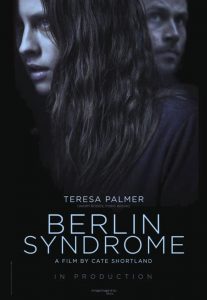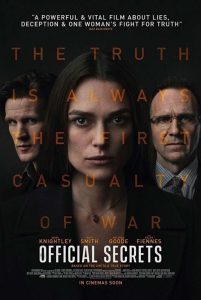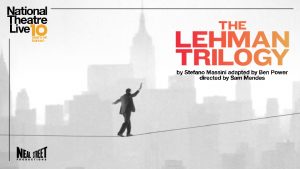
‘A gun is as good or as bad as the man using it. Remember that.’ These are words to live by. These are words that express a personal code for doing good deeds in the world, according to the hero of George Stevens’ great 1953 Western Shane.
We first see this lone hero (Alan Ladd) from a distance, captured in a long shot, his pearl-handled gun gleaming in its holster, riding down into a valley, the Grand Tetons (the highest mountain range in Northwest Wyoming) rising majestically behind him. It’s a striking opening scene. He moves slowly, like a golden-haired knight in fringed buckskin, making his way into the film and into our consciousness.
We see him as Little Joey Starrett (Brandon de Wilde) sees him. Joey has his unloaded rifle trained on a deer when he spots the man riding towards the family farm. He calls out to his father, Joe (Van Heflin), ‘Somebody’s comin’, Pa.’ To which Pa replies, ‘Well, let him come.’ Already there is an air of anticipation and mystery around this stranger and Joey’s immediately in awe, gripped by the fever of hero worship that will last the film’s entirety.
The man quietly asks if he can pass through their property. ‘Call me Shane’ he says, and endears himself further to the boy, identifying his shyness and attentiveness as admirable qualities: ‘I like a man who watches things go on around. It means he’ll make his mark someday.’ But Shane’s also jumpy. He has a history with that gun slung to his side. He doesn’t say what, but we know there’s something because of the speed with which he draws when Joey, showing off, cocks his rifle. When Joey asks, ‘Bet you can shoot … Can’t you?’ Shane replies, ‘Little bit,’ playing down his prowess. Joe’s wife, Marian (Jean Arthur) watches all this through the window inside their log cabin.

Joe and Marian are homesteaders in Wyoming, building a farm and a life for themselves in the state’s wide, flat plains; Shane’s a drifter, just passing through, bound some place he’s never been. But this time he’s going to have to rest for a bit. He’s immediately caught up in the war being waged between the cow ranchers, led by Rufus Ryker (Emile Meyer) against the farmers, or ‘sodbusters’, as they are insolently called. Ryker wants their land so his cattle can roam freely; the homesteaders want their little claim and to be left alone to work it. Ryker and some men come to visit and the tense violent confrontation that ensues allows Shane’s cool demeanor a chance to shine. There will be more trouble throughout the film and Shane, like a samurai, will be ready for it. Joe is impressed enough to ask him to stay – not to fight his battles for him but to help him work the land.
There is a quiet intensity to these well paced, opening scenes in Stevens’ film. They introduce the film’s major characters and tell us almost everything we need to know about them. Shane enters the landscape of the film a lone ronin with little personal backstory (what we come to know is only ever implied), in the tradition of Toshiro Mifune in Yojimbo (1961) but without the comedy. We don’t know what motivates Shane’s actions other than what his actions themselves tell us about the code he lives by. He comes into the lives of the Starrett family and the other homesteaders like a warrior for hire, ready to take on their cause because it is an honest and good one. And he fights for himself – because he’s looking to be redeemed.

Directed by Stevens between A Place in the Sun (1951) and Giant (1956), Shane,like these other major films, can also be seen as an exploration of the great symbolic myths of America. Here we have the duel between good and evil played out against the birth of the American West, the desire for community and family in conflict with individualism and greed. Shane rides into a lawless place (the law, we repeatedly hear, is many miles away, too far to come when there’s trouble) to create his own sense of right and order. It’s an archetypal story of frontier heroism, played out many years later in Clint Eastwood’s Pale Rider (1985), which has a very similar plot and ending.
Shot on location in Jackson Hole, Wyoming, the film’s cinematography is wide and rich. Stevens’ film is made up of mostly long and medium shots that locate his characters in a very specific space. Shane was the first film to be projected in a flat widescreen format – the panoramic screen invented by Paramount and installed at Radio City Music Hall for the film’s premiere. The screen was a perfect vehicle for such a cinematic film. The memorable score by Victor Young matches each sequence. In addition, Stevens made significant innovations in sound editing, especially with the explosive impact of gunfire.

Shane is soft-spoken and self-possessed and each member of the Starrett family finds themselves drawn to him. But Joey in particular is mesmerized by Shane’s gun belt despite Stevens making a point of having Shane remove it when he takes up residence in the Starrett barn. On or off, Shane’s ‘six shooter’ is the film’s defining symbol. When he isn’t wearing it he’s able to indulge in the quiet domesticity he seems to crave. Sitting down to eat with the Starrett’s for the first time he’s clearly at ease. After dinner, he goes outside and chops wood without being asked. He’s expressing his gratitude and revealing a commitment to being a good man.
Shane’s just as handy using his hands as a weapon. The extraordinary extended fight sequence at the saloon, when he’s called upon to defend the sodbusters honour, has him take on all the men, bare-knuckled. He’s small and scrappy but throws hard punches as Joey looks on, in awe, while eating a candy cane.
Sensing how far Joey has fallen (‘I love him almost as much as I love Pa’) perhaps because she’s also fallen just as hard (the unspoken desire between Shane and Marian is worthy of an essay of its own), Marian warns Shane, ‘Guns aren’t going to be my boys life.’ Shane makes the distinction between good and bad men and good and bad guns; that a gun is a tool like any other. Shane takes pride in showing restraint. But other characters equate gun slinging with murder and in the end that’s all it can be.

Shane’s honesty about who he is and what he is there to do determines the film’s outcome. He is a good man among bad men. And by the time he saddles up and rides into town for the film’s final showdown with the hired gunslinger, Jack Wilson (Jack Palance) he has accepted that the blood of past killings remains with him:
‘A man has to be what he is, Joey. You can’t break the mould. I tried it and it didn’t work for me … there’s no living with, with a killing. There’s no going back from it. Right or wrong, it’s a brand, a brand that sticks. There’s no going back.’
So Shane can’t stay still, he has to keep moving forward. It’s the only honest way he can escape it. We don’t know where Shane has come from and we don’t know where he is riding off to or if he’ll even survive his wounds when he leaves Joey calling after him, famously, ‘Shane! Come back!’ All we know is he has left his mark on these people and he’s given them the chance to live even better lives than his.
Shane screened as part of ACMI’s Samurai Cinema season.





